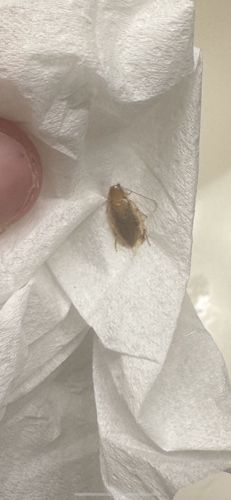German Cockroach
Scientific Name: Blattella germanica
Order & Family: Blattodea, Ectobiidae (formerly Blattellidae)
Size: Typically 1.1 to 1.6 cm (1/2 to 5/8 inch) long

Natural Habitat
Prefers warm, humid environments, commonly found indoors in kitchens and bathrooms, near food preparation areas, sinks, drains, and appliances. They often hide in small cracks and crevices.
Diet & Feeding
Omnivorous scavengers. They eat almost anything, including food scraps, grease, starches, sugars, proteins, and even non-food items like soap, glue, or toothpaste.
Behavior Patterns
Nocturnal; hides in cracks and crevices during the day. Known for rapid reproduction and can infest homes quickly. They are attracted to food sources and moisture. Females carry egg cases (oothecae).
Risks & Benefits
Risks: Considered a significant public health pest. Can contaminate food, spread bacteria (like Salmonella, E. coli), and trigger allergies and asthma attacks, especially in children, due to their droppings and shed skins. No known benefits to humans in an indoor environment.
Identified on: 9/2/2025